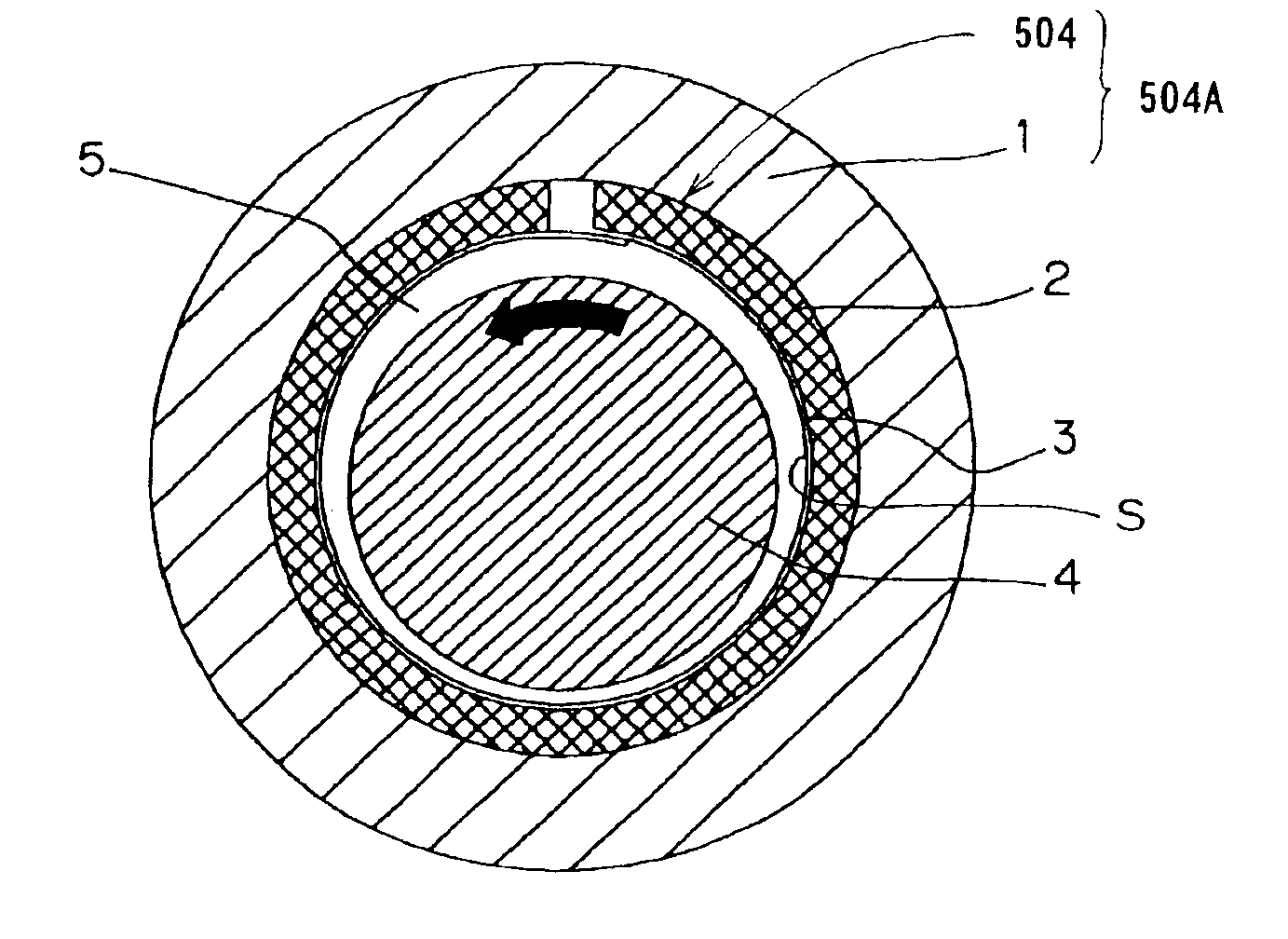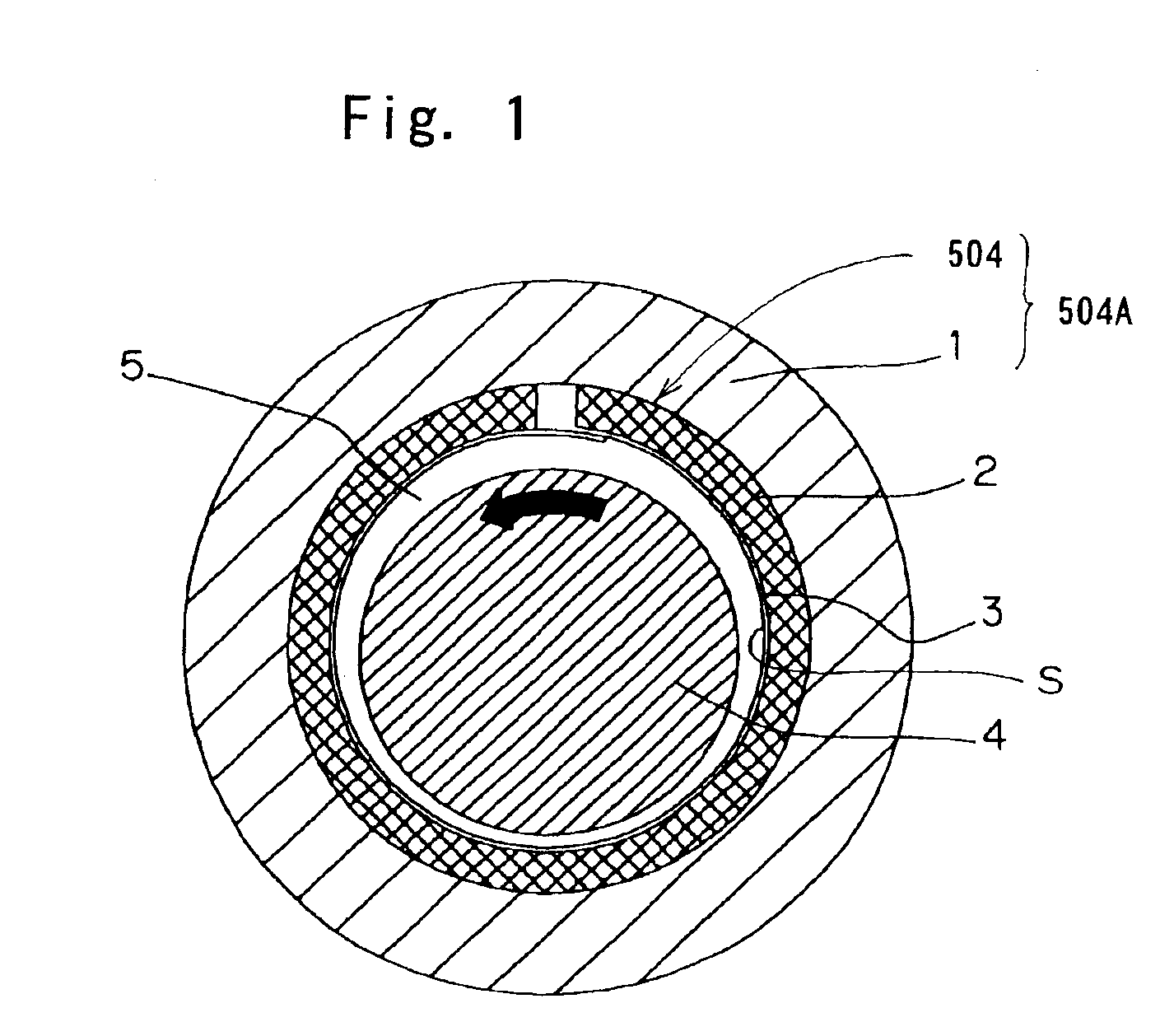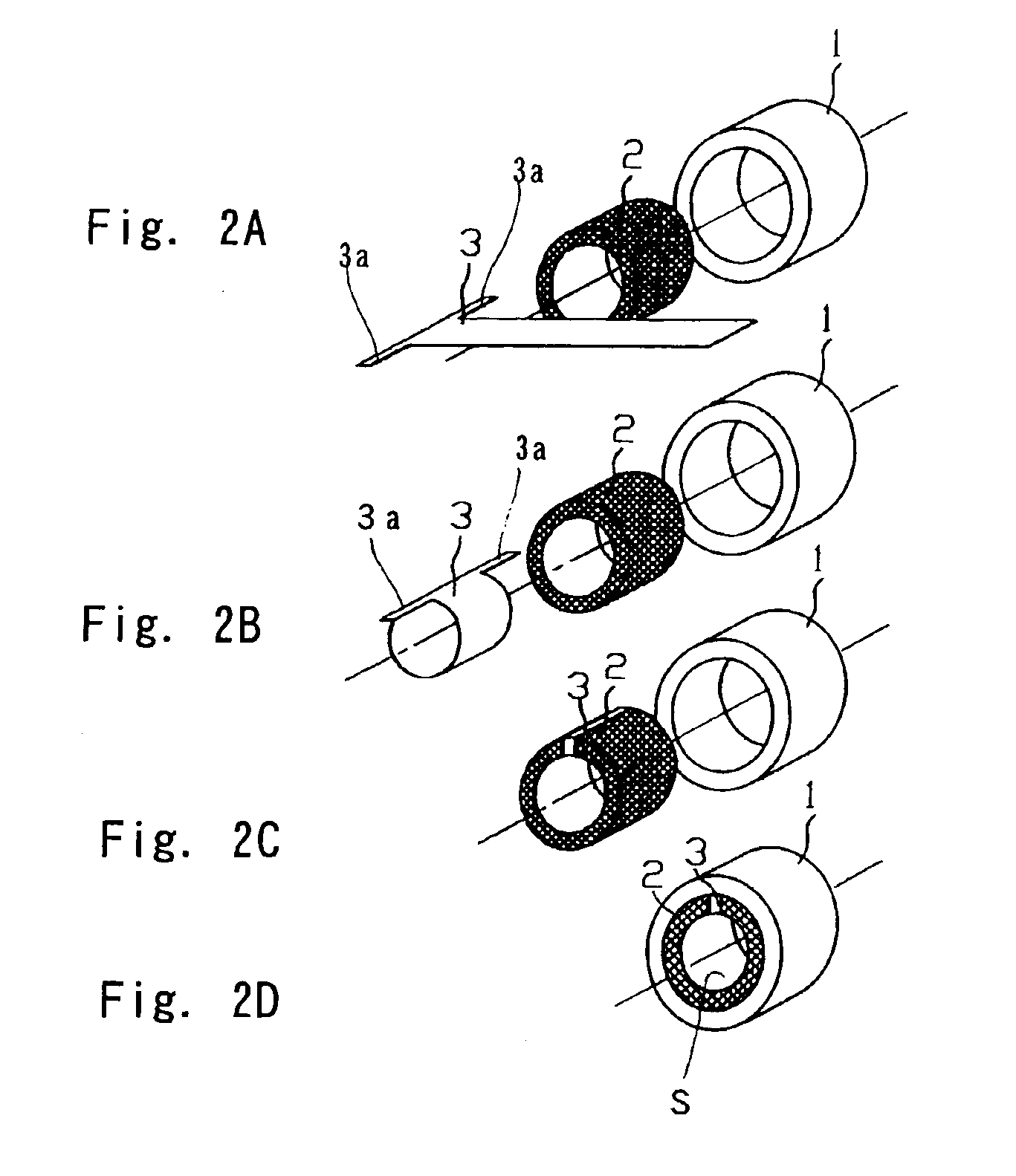Foil bearing and spindle device using the same
a technology of oil bearing and spindle, applied in the direction of rotary bearings, shafts and bearings, electrostatic spraying apparatus, etc., can solve the problems of reduced life, considerable unbalance, and considerable unbalance, and achieve the effect of small shape and misalignment errors, large damping force, and advantageous increase of the permissible amount of unbalan
- Summary
- Abstract
- Description
- Claims
- Application Information
AI Technical Summary
Benefits of technology
Problems solved by technology
Method used
Image
Examples
first embodiment
With reference to FIGS. 1 and 2D, a foil bearing according to a first preferred embodiment of the present invention will be described. It is to be noted that the first embodiment shown therein will be described as applied to a sliding bearing of a radial type, that is, a journal bearing. The illustrated foil bearing includes an elastic member 2 formed by pressing a generally wire net, and a bearing foil 3 in the form of a metal foil. The elastic member 2 is shaped to assume a cylindrical configuration by a press work used in pressing the metal net. The metal net referred to above is prepared from thin metal wires. The wire net may be of a structure wherein wires are so braided in either a two-dimensional band or a three-dimensional shape that they will not be naturally disentangled. Specifically, the wires forming the wire net may be so braided or so knitted in a manner similar to a textile fabric, or so merely entangled that they will not come loose.
As shown in FIGS. 2A to 2C, the ...
second embodiment
Even in this second embodiment, this radial bearing 504 and the bearing housing 1 altogether define a bearing unit 504A.
Referring to FIG. 5, a third preferred embodiment of the present invention will be described with the present invention applied to the journal bearing. In this embodiment shown in FIG. 5, the elastic member 2 is corrugated to have hills and dales that alternate one after another in a direction circumferentially thereof. In the assembled condition, the hills and dales of the elastic member 2 are held in contact with the inner peripheral surface of the bearing housing 1 and the bearing foil 3, and vice versa. As a matter of course, the elastic member 2 prior to being connected together with the bearing foil 3 is prepared from the wire net as hereinbefore described and is corrugated in any known manner. The use of the corrugated elastic member 2 is effective to allow the rigidity of support of the bearing foil 3 to be set to a wide range. It is to be noted that althou...
PUM
 Login to View More
Login to View More Abstract
Description
Claims
Application Information
 Login to View More
Login to View More - R&D
- Intellectual Property
- Life Sciences
- Materials
- Tech Scout
- Unparalleled Data Quality
- Higher Quality Content
- 60% Fewer Hallucinations
Browse by: Latest US Patents, China's latest patents, Technical Efficacy Thesaurus, Application Domain, Technology Topic, Popular Technical Reports.
© 2025 PatSnap. All rights reserved.Legal|Privacy policy|Modern Slavery Act Transparency Statement|Sitemap|About US| Contact US: help@patsnap.com



